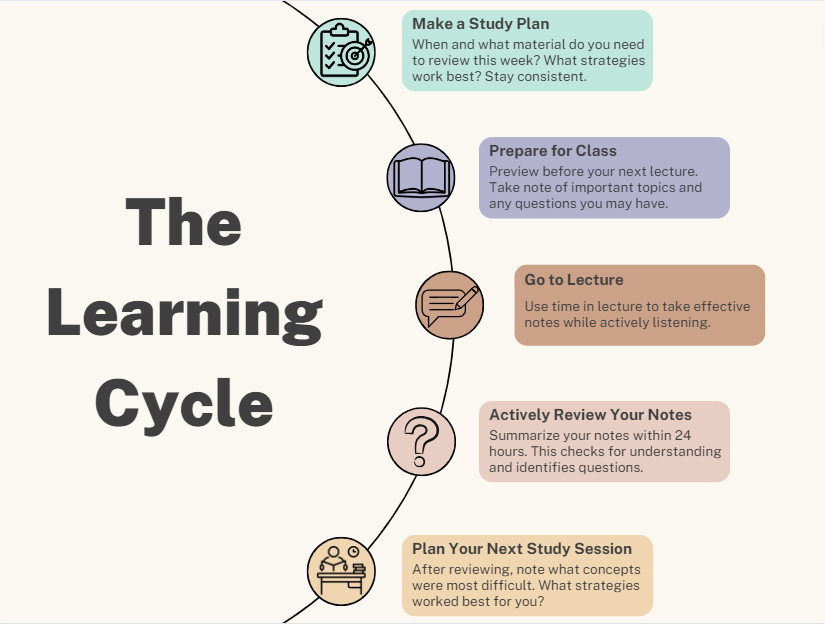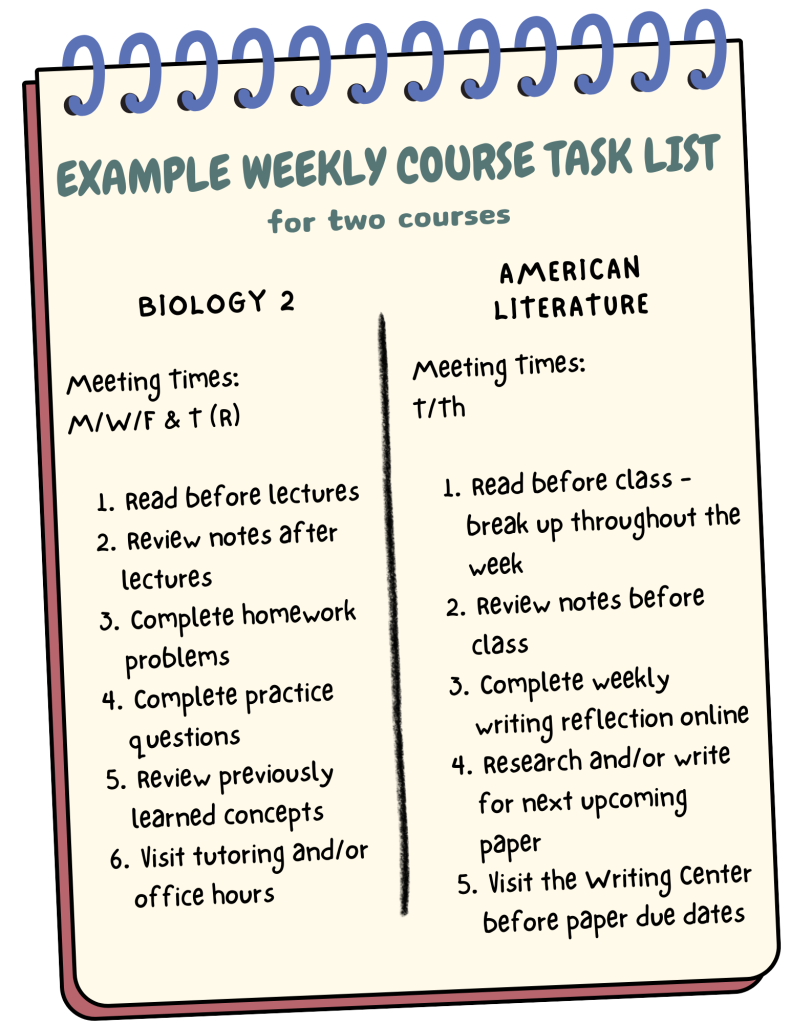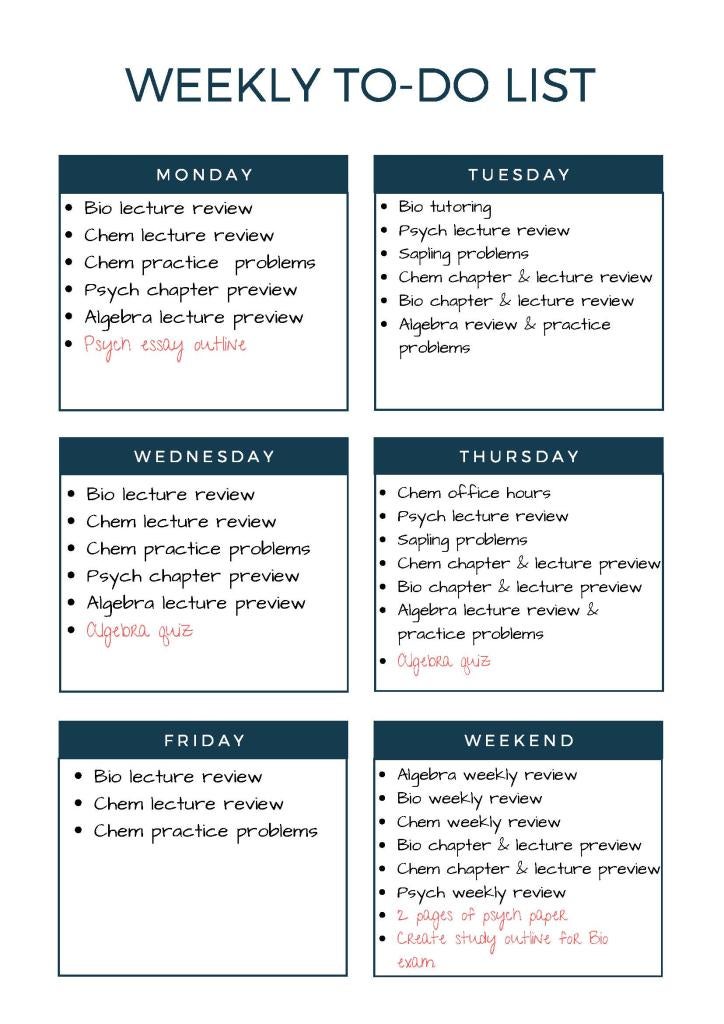As you get started with each new class each term, it is a good idea to think through your overall academic plan for success for each class. By planning out the consistent tasks you need to complete such as reading before class, actively reviewing notes, completing practice problems or working on a long-term project, you can have a better sense of how to spend your time each week. Using the weekly course task list, keep track of the things you need to do each week. Check out the examples below for what may make sense for a course you are taking. The numbers in parentheses are an estimate of about how much time per week you may need to spend on that task. For example, for your Literature course you may have a lot of reading to do each week, which may take up to 4 hours. For Biology, you may be covering a chapter a week which could take a couple hours to read.
- Step 1: Understand the Learning Cycle
-

- Step 2: Set your Weekly Task List for Each Course
-
As you get started with each new class each term, it is a good idea to think through your overall academic plan for success for each class. By planning out the consistent tasks you need to complete such as reading before class, actively reviewing notes, completing practice problems or working on a long-term project, you can have a better sense of how to spend your time each week. Using the weekly course task list, keep track of the things you need to do each week. Check out the examples below for what may make sense for a course you are taking. The numbers in parentheses are an estimate of about how much time per week you may need to spend on that task. For example, for your Literature course you may have a lot of reading to do each week, which may take up to 4 hours. For Biology, you may be covering a chapter a week which could take a couple hours to read.

- Step 3: Create a Consistent Routine
-
Once you have your list complete for each class, you can either combine it with a weekly schedule or permanent to-do list for each day of the week. Your schedule should follow a general routine for many classes. See below for an example of a permanent to-do list. The items in red are tasks that may not appear every week but become important as deadlines approach. You could also build out your schedule using a weekly planner or organizational tool of your choice.
